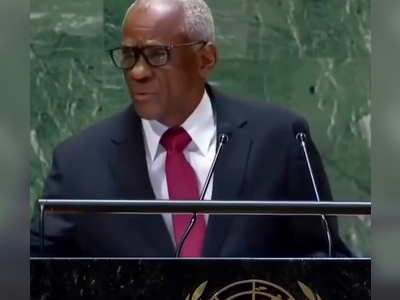Understanding Hybrid Warfare: Russia's Strategy Amidst Ukrainian Tensions
How Moscow Might Respond to Ukraine's Recent Strike with US-Made Missiles
Ukraine's recent missile strike inside Russia has heightened concerns about Moscow's potential response through hybrid warfare, a strategy detailed in a report by The Guardian.
Hybrid warfare involves using a mix of cyberattacks, disinformation, and physical violence with the intent to destabilize opponents and blur traditional warfare lines.
Mark Rutte, NATO's secretary general, highlighted Moscow's increasing reliance on these tactics to escalate tensions from Ukraine to Europe and beyond.
Russia's hybrid warfare history includes election-related disinformation campaigns and cyberattacks, such as those associated with Estonia and drone arrests near critical infrastructure in Norway.
These incidents illustrate how hybrid warfare adds complexity to global security.
NATO noted in June that recent attacks have increased in speed, scale, and intensity due to rapid technological advancements and global interconnectivity.
Although 'counter-hybrid support teams' are available, countries are primarily responsible for their defense.
Signs of hybrid warfare have emerged in the North and Baltic Seas.
In April, Estonia, alongside other Baltic states, warned of GPS jamming that threatened aviation safety.
This disruption, attributed to Russian hybrid activities, led Finnair to halt flights to Tartu, Estonia, following increased interference since 2022, especially near Russia's Kaliningrad region.
Additionally, Russia has sparked border disputes in the Baltic Sea, with plans to alter maritime boundaries with Finland and Lithuania from 2025.
Estonian officials reported that Russian border guards removed buoys marking the Narva River border.
Estonian Prime Minister Kaja Kallas described this as part of a broader Russian strategy to create fear and anxiety using border-related tools.
Hybrid warfare involves using a mix of cyberattacks, disinformation, and physical violence with the intent to destabilize opponents and blur traditional warfare lines.
Mark Rutte, NATO's secretary general, highlighted Moscow's increasing reliance on these tactics to escalate tensions from Ukraine to Europe and beyond.
Russia's hybrid warfare history includes election-related disinformation campaigns and cyberattacks, such as those associated with Estonia and drone arrests near critical infrastructure in Norway.
These incidents illustrate how hybrid warfare adds complexity to global security.
NATO noted in June that recent attacks have increased in speed, scale, and intensity due to rapid technological advancements and global interconnectivity.
Although 'counter-hybrid support teams' are available, countries are primarily responsible for their defense.
Signs of hybrid warfare have emerged in the North and Baltic Seas.
In April, Estonia, alongside other Baltic states, warned of GPS jamming that threatened aviation safety.
This disruption, attributed to Russian hybrid activities, led Finnair to halt flights to Tartu, Estonia, following increased interference since 2022, especially near Russia's Kaliningrad region.
Additionally, Russia has sparked border disputes in the Baltic Sea, with plans to alter maritime boundaries with Finland and Lithuania from 2025.
Estonian officials reported that Russian border guards removed buoys marking the Narva River border.
Estonian Prime Minister Kaja Kallas described this as part of a broader Russian strategy to create fear and anxiety using border-related tools.












